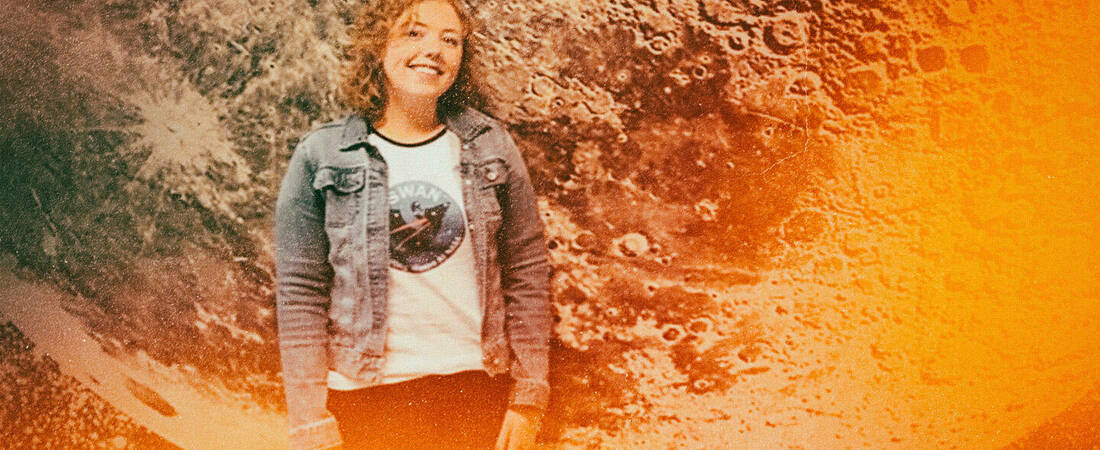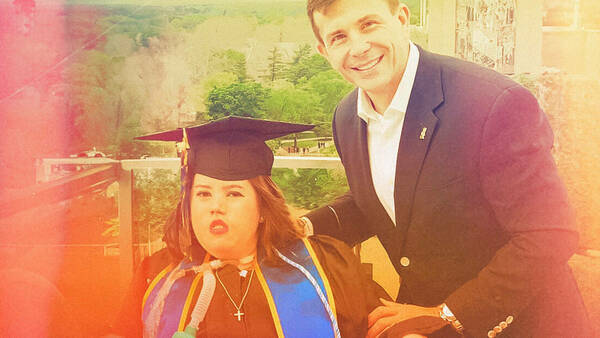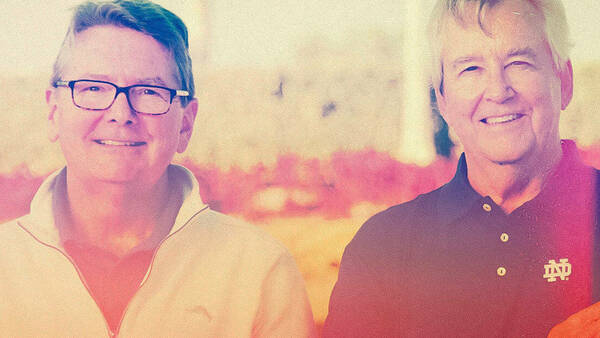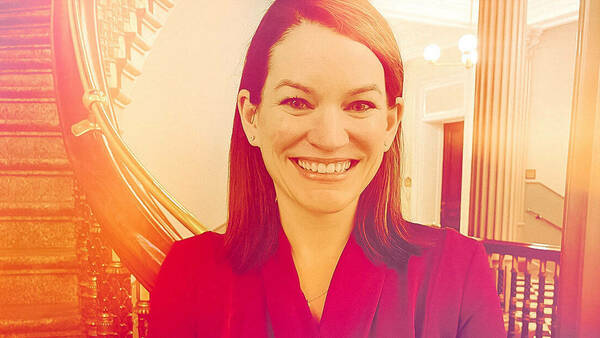Maybe it’s just a coincidence that the quote that inspires NASA scientist Hannah C. O’Brien ’19 is by Mae Jemison, an astronaut who became the first black woman to travel into space 30 years ago. Maybe it isn’t. Either way, O’Brien, who earned a dual degree through Notre Dame (earth sciences) and St. Mary’s (economics), tries to live by Jemison's advice: “Don’t let anyone rob you of your imagination, your creativity, or your curiosity. It’s your place in the world; it’s your life. Go on and do all you can with it, and make it the life you want to live.
“I think that has embodied my experience at Notre Dame and at NASA,” O’Brien says.
O’Brien first began thinking about planetary geology in Dr. Clive Neal’s Planet Earth class as a sophomore. Dr. Neal piqued her interest so much that one day after class, O’Brien asked him if there were any opportunities to do research in the field. Dr. Neal welcomed her into a leadership group he was leading on lunar research, which she joined after completing the class. “It was from there that I had an introduction to the planetary geology community and had an opportunity to hear some folks from NASA talk at the Lunar Planetary Science Conference. And that was for me when I realized this is where I wanna end up,” O’Brien said.
That is exactly where O’Brien has ended up. She interned at NASA in the summer of 2018 through a program led by the Lunar and Planetary Institute and, after working at Notre Dame as a physics TA and assistant research scientist for a couple of years after graduating, now works full-time as a Lunar Curation Scientist at the Johnson Space Center in Houston. Some of what she learned in Dr. Neal’s class still plays a role in her daily work life, most of which is spent doing lab work in JSC’s Apollo Lunar Sample Laboratory. “We get curatorial orders based on requests for lunar samples, and we process and allocate these samples.”
When conducting research at Notre Dame, O'Brien worked with samples that were quite small. Now, however, she sometimes works with samples “as big as your hand, if not larger,” according to O’Brien, which she noted as one of the most surprising parts of her work to everyone – including, at first, herself. “Especially as a scientist who had worked on lunar samples before I came to JSC – when we send out samples, we send out really small pieces of them. Getting to work on pristine samples in a range of sizes is really exciting.”
When a PI puts in a request for samples and is approved, O’Brien is one of the people responsible for breaking the rocks apart to get the specific type of sample they are looking for. “(It) is definitely nerve-wracking the first time you do it,” O’Brien says. Obviously, attention to detail is essential, especially because NASA “maintains the orientation of the lunar samples. When astronauts collected samples on the Moon, they took extensive documentation, and we maintain that documentation and orientation. So when I break a rock, I actually have to put it back together and document in detail what I did to the sample.”
While there are many samples for O’Brien and her colleagues to observe, O’Brien already has a goal in mind for what she hopes to discover in her research. In recent years, it has been discovered that there is water-ice on the permanently shadowed regions of the Moon, something O’Brien has been interested in even before that discovery. “Overall, what I find most fascinating is In-Situ Resource Utilization… trying to better understand what resources are on the Moon and what can we use that’s there to establish a human presence.” She adds that “the possibility of establishing long-term human presence on the Moon is just a really exciting concept.”
It will likely take a long, long time before O’Brien can turn that dream into reality, but that does not mean her efforts have not gone unrecognized. In fact, when Dr. Neal was chosen to be featured in Notre Dame’s “What Would You Fight For?” campaign in 2016, he asked O’Brien to be a part of the production. “That was a lot of fun. I will say, it was harder to pretend to do research for the camera than it was to actually do the research,” O’Brien says, laughing. “I love sharing my passion and excitement for the Moon, I believe space is for everyone.”
In the “What Would You Fight For?” feature, O’Brien confidently stated, “The research I’ve done has given me the confidence to pursue my dream of someday working for NASA.” Looking back on the feature, having accomplished that dream, O’Brien says, “I was just really grateful for the opportunity to represent Notre Dame and the really important research our group was doing.” O’Brien has undoubtedly done just that in her young career at NASA.
“I’m just super grateful to Dr. Neal and to our research group for all the opportunities that I had to work on lunar samples as an undergrad,” O’Brien says. “That’s definitely a unique experience that you can’t get everywhere.”



